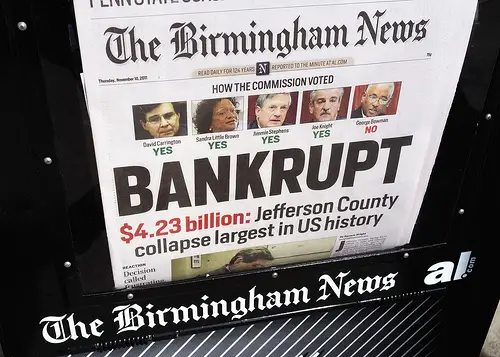 Nobody ever truly starts out dreaming of going bankrupt one day — but sometimes it’s a necessary evil. If the day finally comes when you decide to file for bankruptcy, the next decision is to understand the type of bankruptcy that best suits your present circumstances.
Nobody ever truly starts out dreaming of going bankrupt one day — but sometimes it’s a necessary evil. If the day finally comes when you decide to file for bankruptcy, the next decision is to understand the type of bankruptcy that best suits your present circumstances.
There are basically four types of bankruptcy forms available: Chapter 7, Chapter 11, Chapter 12 and Chapter 13.
So, the question is: which bankruptcy option is the best choice for you?
Chapter 7
This is the most common form of bankruptcy. It’s typically for personal bankruptcy, but it can also be filed by certain businesses, depending on their circumstances. Under this form of bankruptcy, most of the unsecured debts get eliminated or discharged, which means the creditors cant attempt to collect any money from you; however, not everyone gets to file for this form as not everyone is qualified for Chapter 7. To qualify for this bankruptcy option, your income over the previous six months prior to filing must be equal to, or lesser than, the stipulated average income in the state you are residing in for families of your size. If this is not the case, then you’ll be asked to take up a means test to determine whether or not you have enough income to file for Chapter 13.
Chapter 11
This is a rather intricate option. As a result, it’s mostly used by those businesses that plan to reorganize. However, in rare cases individuals may take this route. As it is a complex bankruptcy form, it’s strongly advised to have a Chapter 11 attorney by your side to handle the intricacies.
Chapter 12
This form of bankruptcy is filed by “family farmers” and “family fishermen” only. It is similar to a Chapter 13 filing, except that it gives farmers and fishermen the ability to clear their debts over a period of time.
Chapter 13
This form of bankruptcy is also called reorganization bankruptcy. The biggest advantage of this option is that it permits you to retain some of your properties such as your house or your car that you might otherwise be likely to lose if you file for Chapter 7. If you opt for Chapter 13, you are asked to pay all your creditors a certain percentage of the total debt over a period of five years. The debts on your part should not exceed a certain maximum limit, if you want to go for Chapter 13.
You’ll also have to file what is called as repayment plan, which is submitted for the approval of bankruptcy court. One of the trustees of the court will look into repayments. Those who fail to maintain their schedule can still convert into a Chapter 7 bankruptcy.
Before You File for Bankruptcy
Of course, before deciding to file for any of these bankruptcy forms, it is always advisable to consult an experienced bankruptcy attorney, who can thoroughly scrutinize your case.
Yes, the decision to file for bankruptcy is never easy — but sometimes it is the only realistic option when finances sour.
Photo Credit: Ralph Daily

We were able to file chapter 7 and still keep our house and car, (along with our student loans, those don’t go away with bankruptcy).